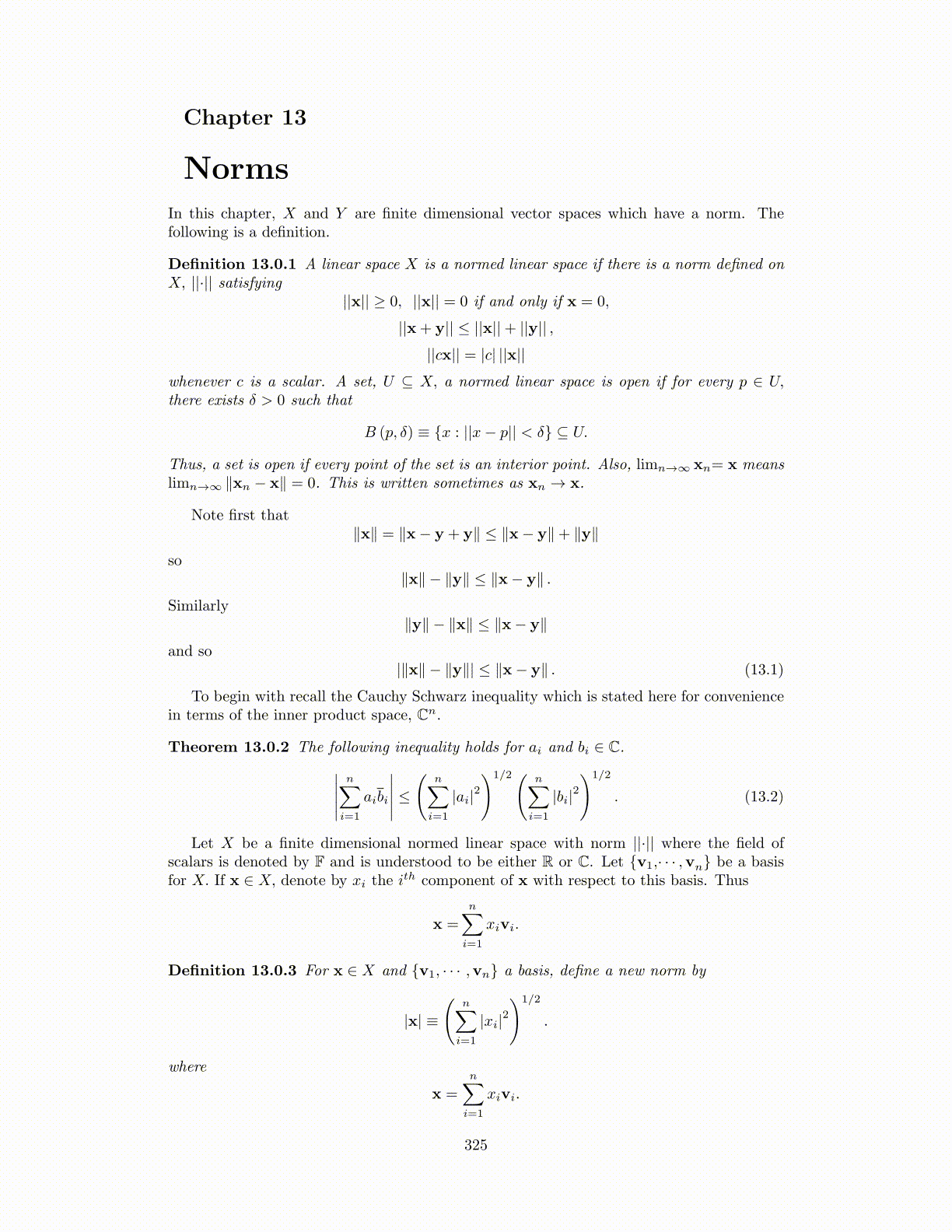
Chapter 13
NormsIn this chapter, X and Y are finite dimensional vector spaces which have a norm. Thefollowing is a definition.
Definition 13.0.1 A linear space X is a normed linear space if there is a norm defined onX, ||·|| satisfying
||x|| ≥ 0, ||x|| = 0 if and only if x = 0,
||x+ y|| ≤ ||x||+ ||y|| ,
||cx|| = |c| ||x||
whenever c is a scalar. A set, U ⊆ X, a normed linear space is open if for every p ∈ U,there exists δ > 0 such that
B (p, δ) ≡ {x : ||x− p|| < δ} ⊆ U.
Thus, a set is open if every point of the set is an interior point. Also, limn→∞ xn= x meanslimn→∞ ∥xn − x∥ = 0. This is written sometimes as xn → x.
Note first that∥x∥ = ∥x− y + y∥ ≤ ∥x− y∥+ ∥y∥
so∥x∥ − ∥y∥ ≤ ∥x− y∥ .
Similarly∥y∥ − ∥x∥ ≤ ∥x− y∥
and so|∥x∥ − ∥y∥| ≤ ∥x− y∥ . (13.1)
To begin with recall the Cauchy Schwarz inequality which is stated here for conveniencein terms of the inner product space, Cn.
Theorem 13.0.2 The following inequality holds for ai and bi ∈ C.∣∣∣∣∣n∑
i=1
aibi
∣∣∣∣∣ ≤(
n∑i=1
|ai|2)1/2( n∑
i=1
|bi|2)1/2
. (13.2)
Let X be a finite dimensional normed linear space with norm ||·|| where the field ofscalars is denoted by F and is understood to be either R or C. Let {v1,· · · ,vn} be a basisfor X. If x ∈ X, denote by xi the i
th component of x with respect to this basis. Thus
x =
n∑i=1
xivi.
Definition 13.0.3 For x ∈ X and {v1, · · · ,vn} a basis, define a new norm by
|x| ≡
(n∑
i=1
|xi|2)1/2
.
where
x =
n∑i=1
xivi.
325